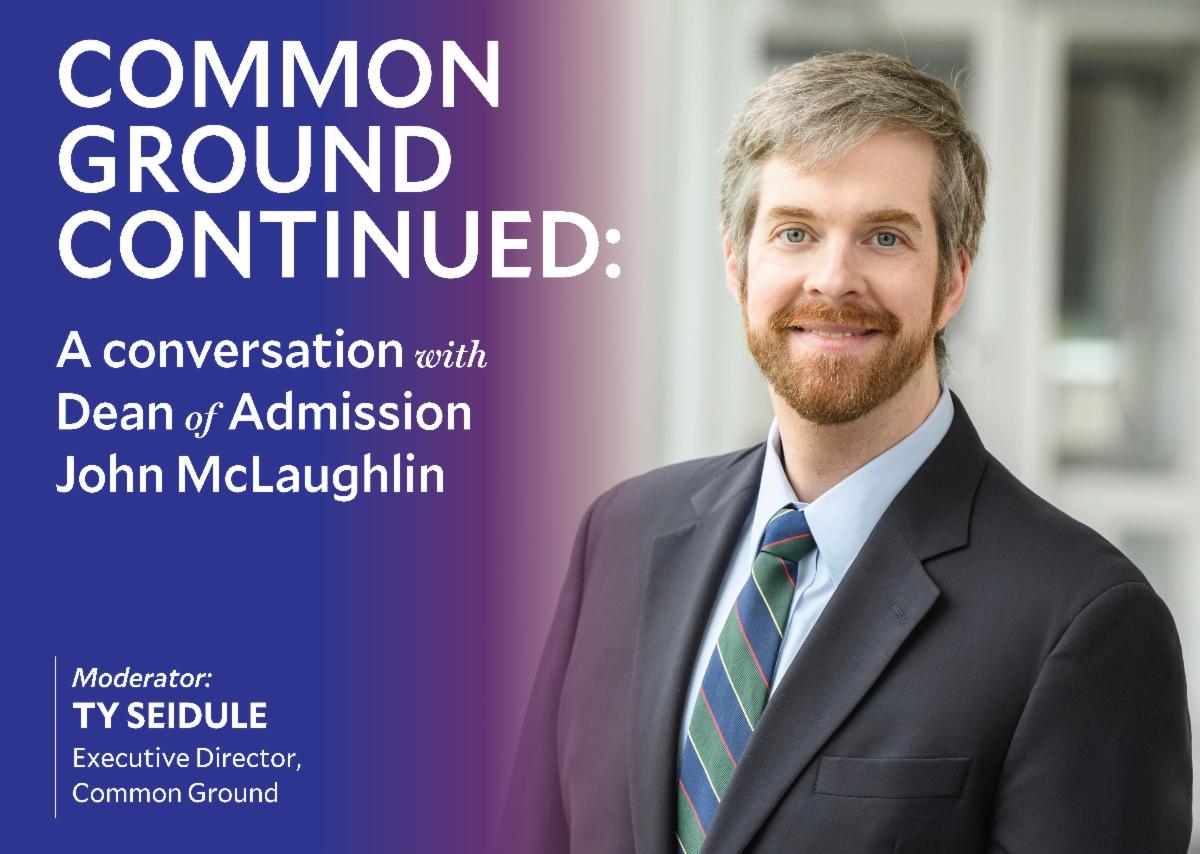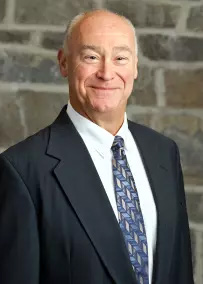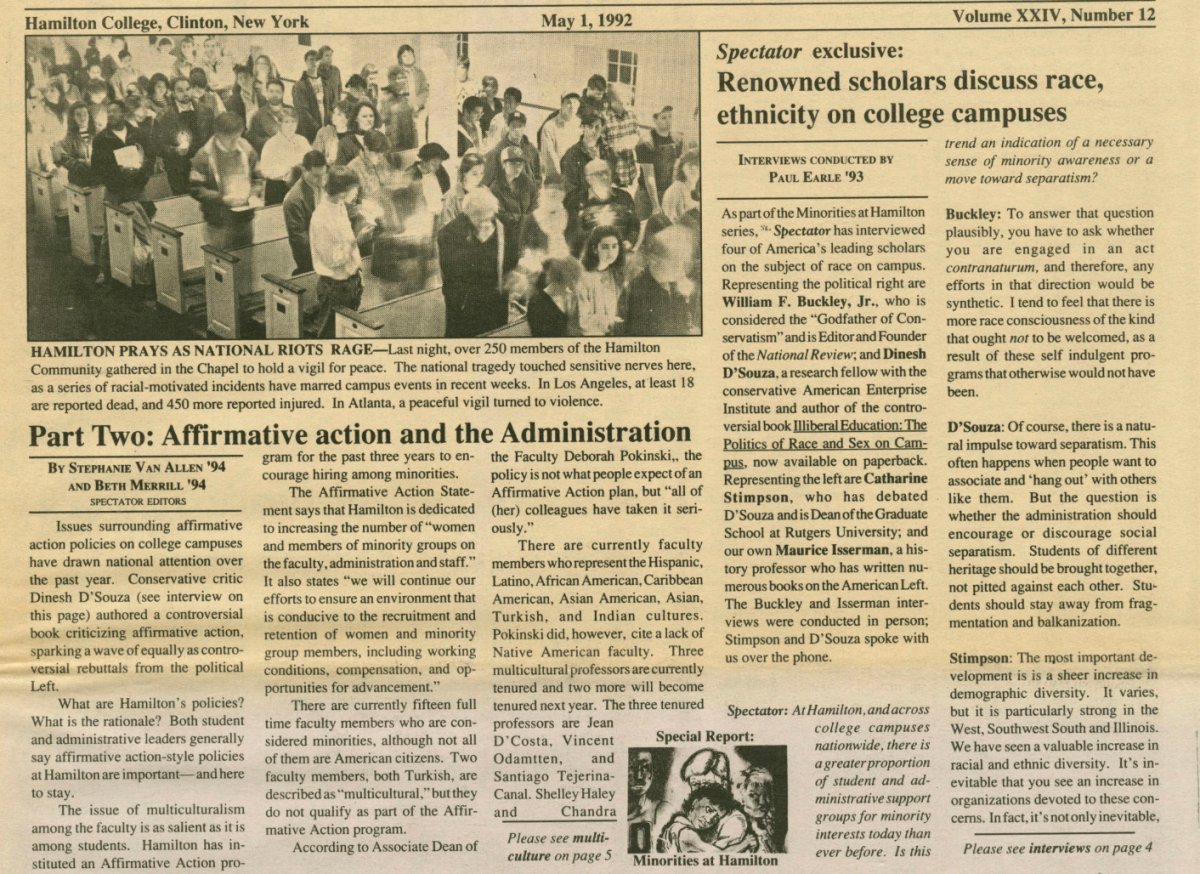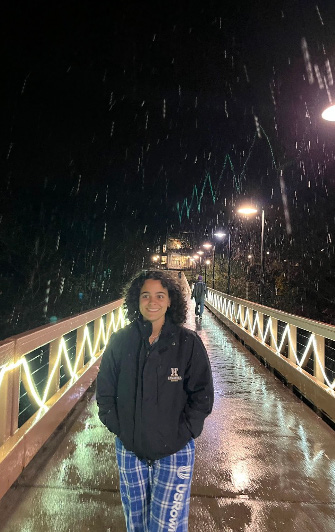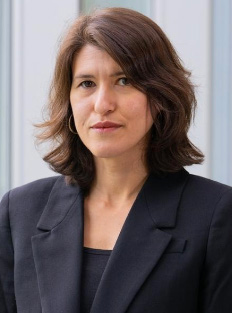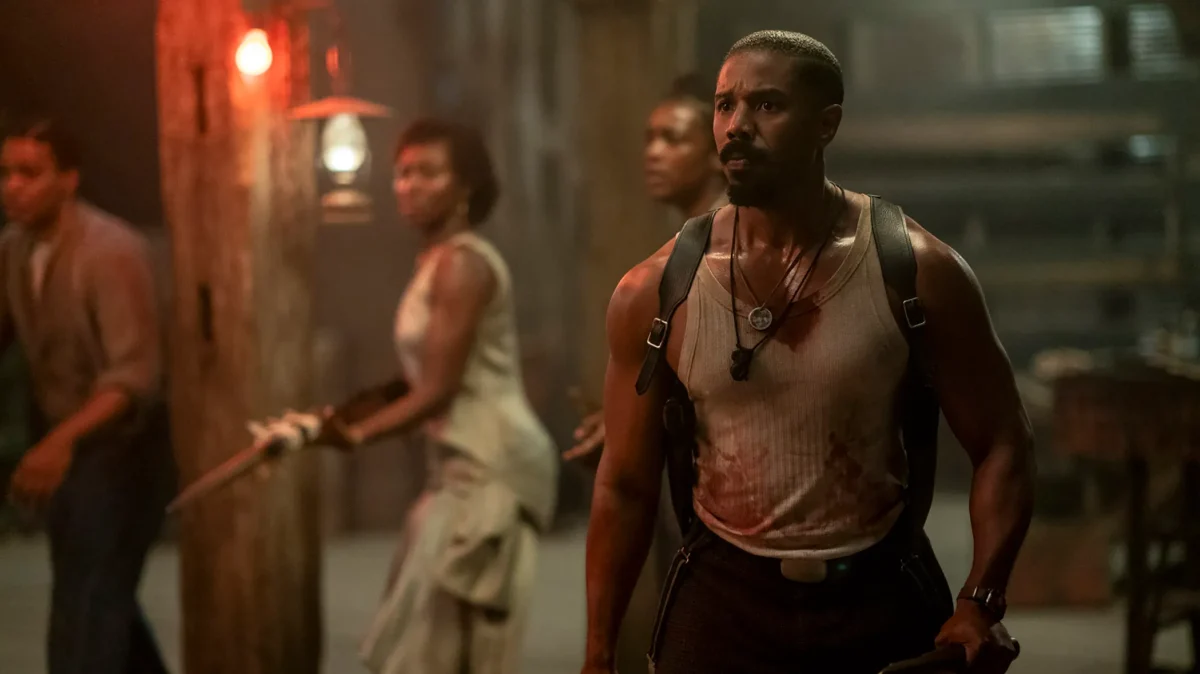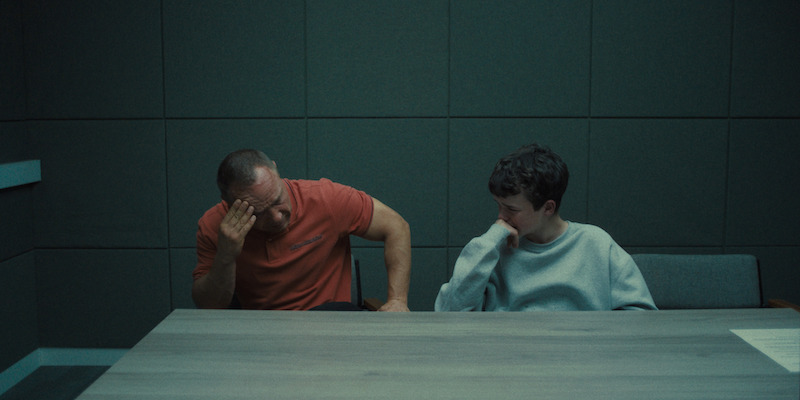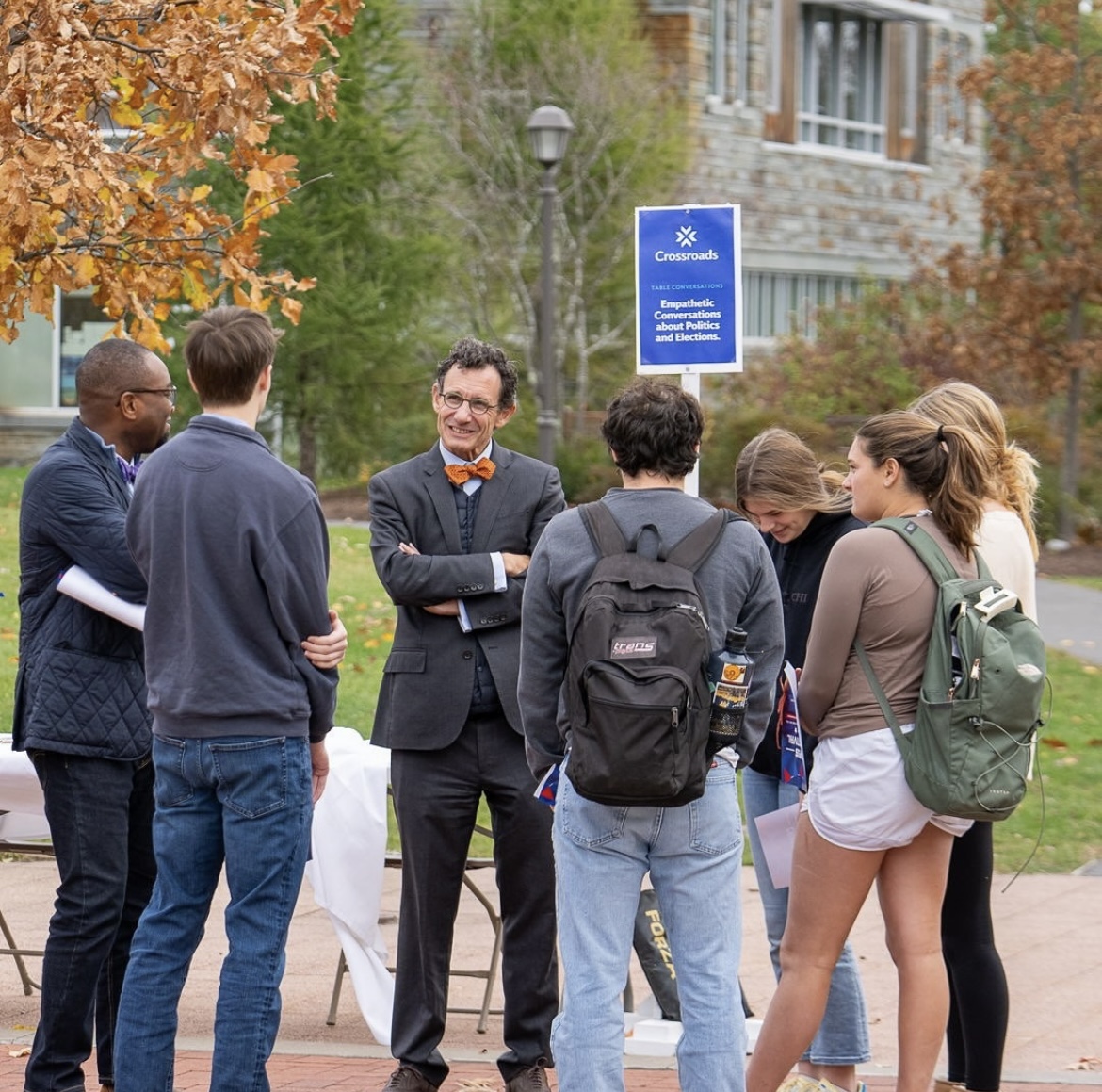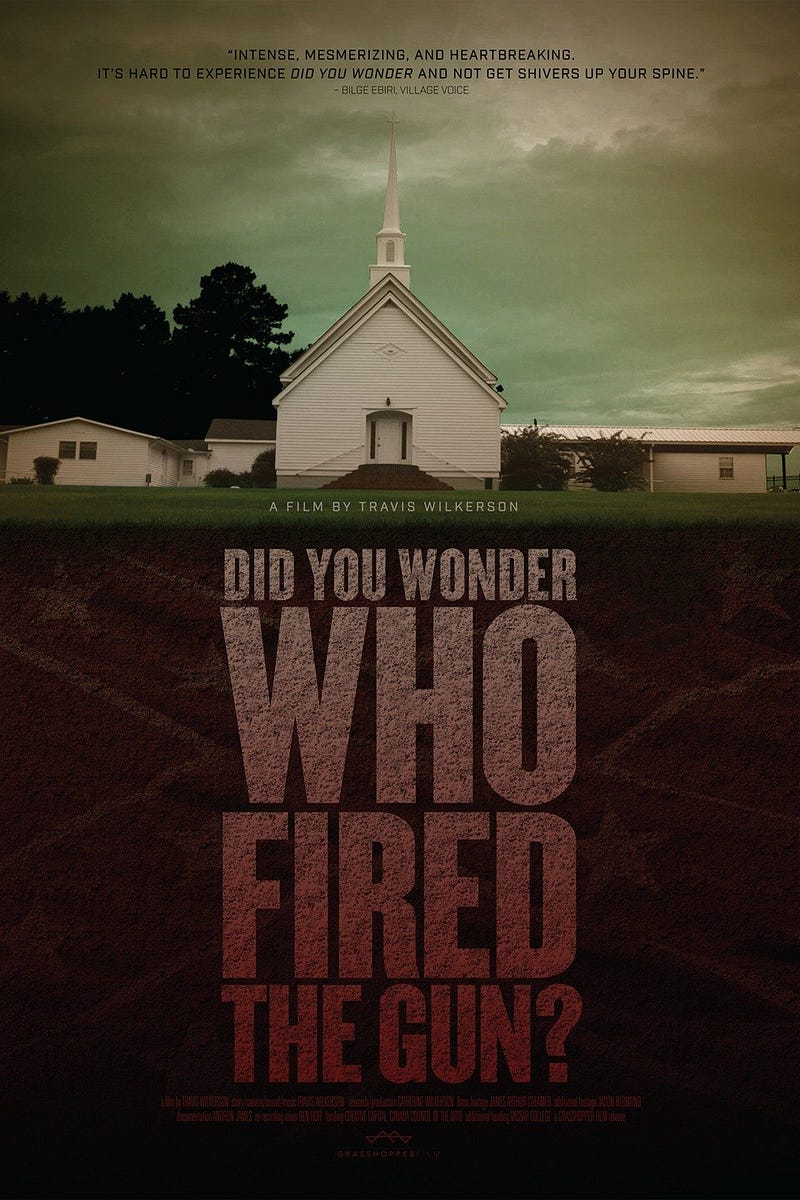
On Wednesday, Nov. 7, Maxim Pozdorovkin came to Hamilton to show his film,
Our New President
, as part of this year’s F.I.L.M., or Forum on Image and Language in Motion, series.
Our New President
is a unique, groundbreaking film in both its structure and theme, documenting the 2016 United States presidential election through a montage of Russian propaganda compiled entirely from YouTube and other online sources. Pozdorovkin pointed out before the screening that he tried to make a film about news in which none of the information was true. A majority of the film is made up of clips from
Russia 1
and
Russia Today
, two news channels completely under the control of the Russian government.
The clips that Pozdorovkin included in the film contained information that was completely false. The constant stream of propaganda and falsehood, from claiming that Hillary Clinton had psychological diseases that would prevent her from being president, to claiming that Donald Trump grew up in a poor neighborhood in Brooklyn and rose from nothing to the top, slowly started to get into the viewers’ heads as they watched. The film makes the viewer feel like a Russian citizen for whom such broadcasts are the only programming available on public television. Pozdorovkin himself described the film, in his humble and humorous way, as a “78-minute lobotomy,” and an “experiment to see how much propaganda someone can take.”
The end product, though overwhelming, was fascinating and by no means painful to watch. The film does not necessarily address Russian interference or hacking in the election — it only shows the influence that false reporting and journalism can have on an election in general. Pozdorovkin said it has received some negative reception from liberals because it is not the “smoking gun” with evidence of Donald Trump’s collusion with Russia that they expected it to be. The film, among many things, aims to criticize Russia’s use of propaganda and manipulation of what journalism should be.
The very first clip Pozdorovkin uses in the film is from old Russian news coverage of a skeleton that was found in an ancient burial site in far east Russia, which allegedly belonged to a tribal princess. This allowed for a bit of a segue into a clip of Hillary Clinton visiting Russia and seeing the princess in a museum when she was still the First Lady, though it still seemed like an arbitrary way to begin the film — that is, until the end. The final clip of the film is a much more recent news broadcast that throws a cloak over all of the popular fascination with the tribal princess after a recent scientific analysis that discovered the skeleton was that of a male of approximately 17 years. Pozdorovkin shows just how wrong news can be, and the utter irony is that the news broadcast is careful to say “approximately 17” to avoid getting the boy’s age wrong when the original information was already so blatantly false.
Pozdorovkin’s film is a fascinating and dire warning of the dangers of manipulating the truth, and a film that, while controversial, is worth a watch for anyone. It is available on YouTube, Google Play, and Amazon Prime.
This Sunday, Nov. 11, shortly after Pozdorovkin’s visit, the F.I.L.M. series brought Travis Wilkerson to show his newest film
Did You Wonder Who Fired the Gun?
. Wilkerson’s film was a personal documentary in which he traveled to Alabama to investigate the story of a horrifying family legend — that his great-grandfather, S.E. Branch, murdered a black man, Bill Spann, in his store and was never punished for it. Following little traditional structure, the film develops as the director experiences the investigation himself and follows the different paths that open to him. He begins at the store his great-grandfather owned, which then brings him through the towns of southern Alabama, where he stumbles across horrifying stories of white nationalism and heartwarming stories of civil rights activism.
Originally performed live along with the movie, Wilkerson’s solemn, sincere voice narrates the documentary, describing his journey and discoveries. In the last scene, which runs for over ten minutes, Wilkerson films himself driving along an Alabama road with the sky burning a fiery red, reflecting on what he and the viewer can take from what he learned. The film calls into question loyalty to family, racism, and remembrance. Wilkerson’s family lives on, some of its members denying that S.E. Branch even did anything wrong; meanwhile, no record of the family of Bill Spann, the man who was murdered, remains. Wilkerson finds no legal records, no information on Spann’s wife or children, and cannot even find Spann’s grave. He only finds the graveyard where Spann, along with other poor blacks at the time, were likely buried in unmarked graves, and Spann’s death certificate. In his narration, Wilkerson reads the death certificate in a chilling way. This simple, horribly neutral document is all that remembers a man’s life and family.
The F.I.L.M. series, organized by Professor Scott MacDonald with support of the Days-Massolo Center and the Kirkland Endowment, allows independent directors such as Maxim Pozdorovkin and Travis Wilkerson to visit Hamilton’s campus and show their work. The next F.I.L.M. event is on Sunday, Dec. 2, with Director Penny Lane, featuring two of her recent films,
The Pain of Others
and
Fraud
.


